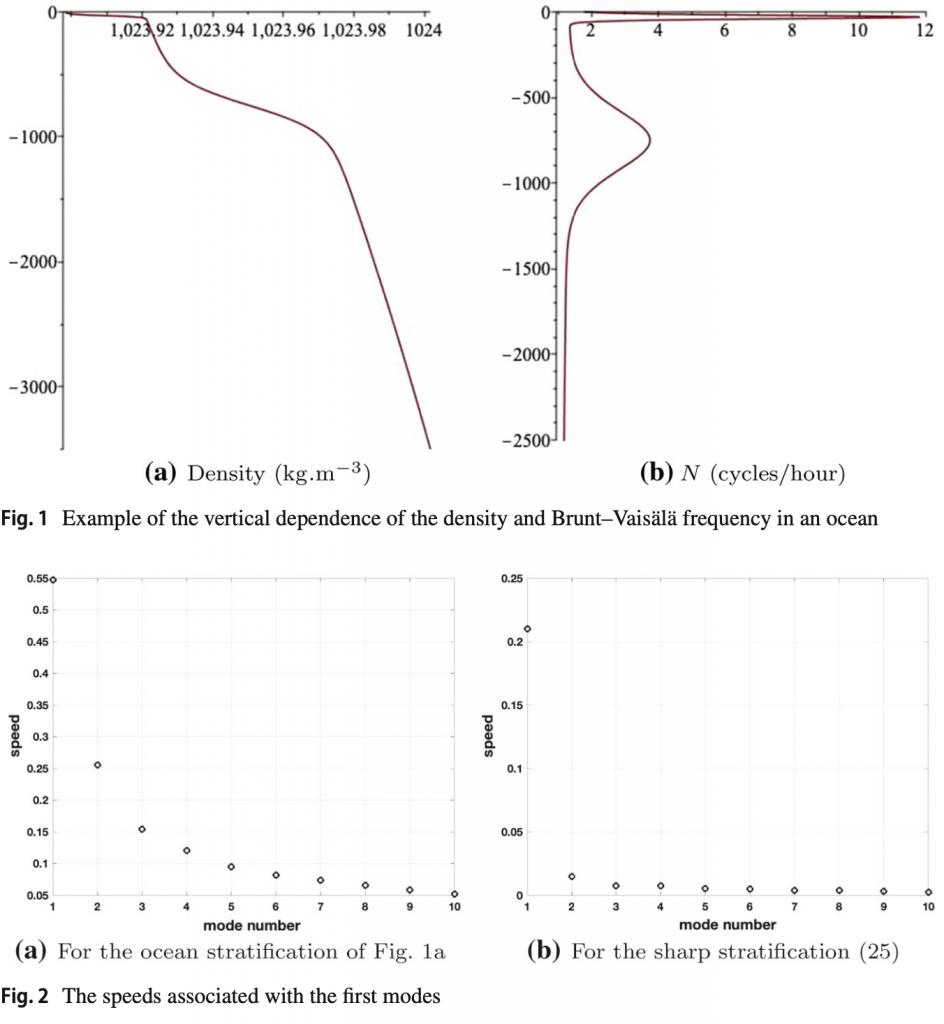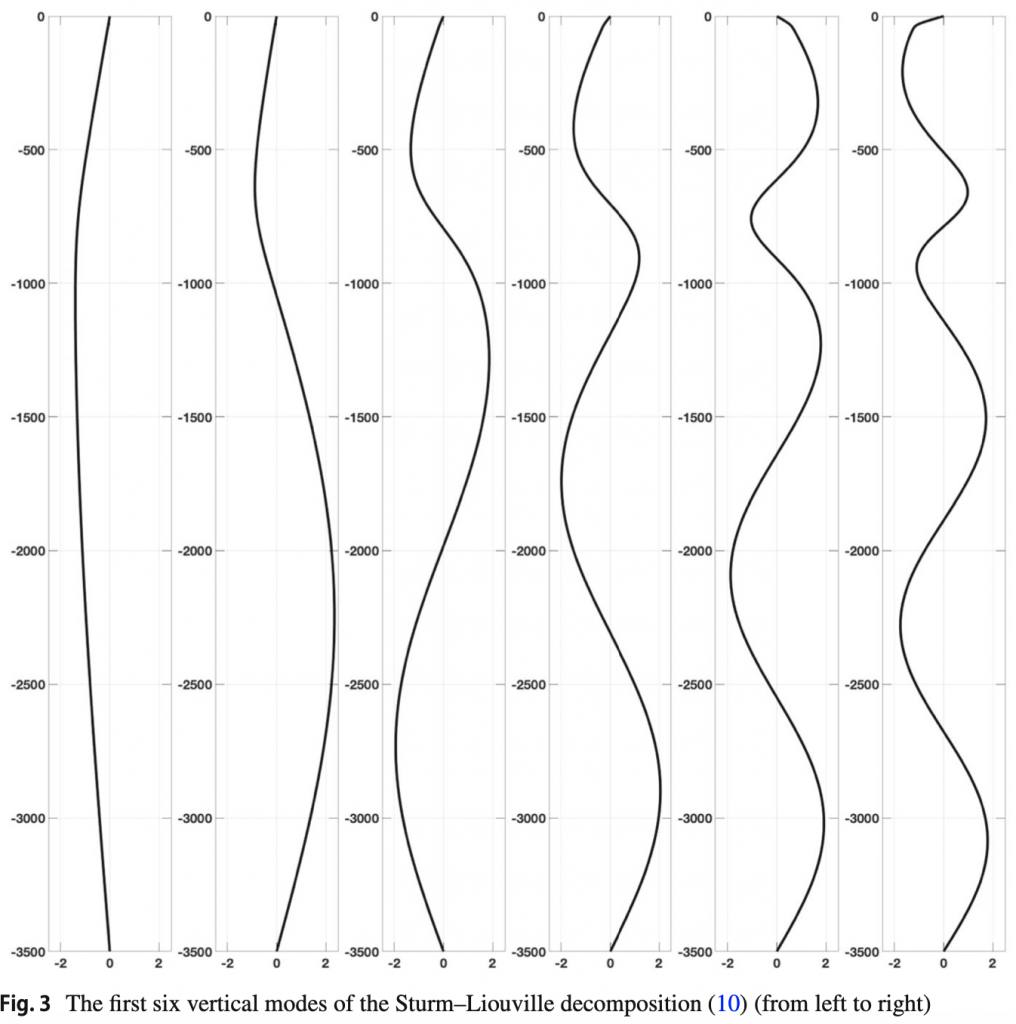D. Lannes, Nonlinearity 33 (2020), R1 Download
We review here the derivation of many of the most important models that appear in the literature (mainly in coastal oceanography) for the description of waves in shallow water. We show that these models can be obtained using various asymptotic expansions of the ‘turbulent’ and non-hydrostatic terms that appear in the equations that result from the vertical integration of the free surface Euler equations. Among these models are the well-known nonlinear shallow water (NSW), Boussinesq and Serre–Green–Naghdi (SGN) equations for which we review several pending open problems. More recent models such as the multi-layer NSW or SGN systems, as well as the Isobe– Kakinuma equations are also reviewed under a unified formalism that should simplify comparisons. We also comment on the scalar versions of the various shallow water systems which can be used to describe unidirectional waves in horizontal dimension d = 1; among them are the KdV, BBM, Camassa–Holm and Whitham equations. Finally, we show how to take vorticity effects into account in shallow water modeling, with specific focus on the behavior of the turbulent terms. As examples of challenges that go beyond the present scope of mathematical justification, we review recent works using shallow water models with vorticity to describe wave breaking, and also derive models for the propagation of shallow water waves over strong currents.



